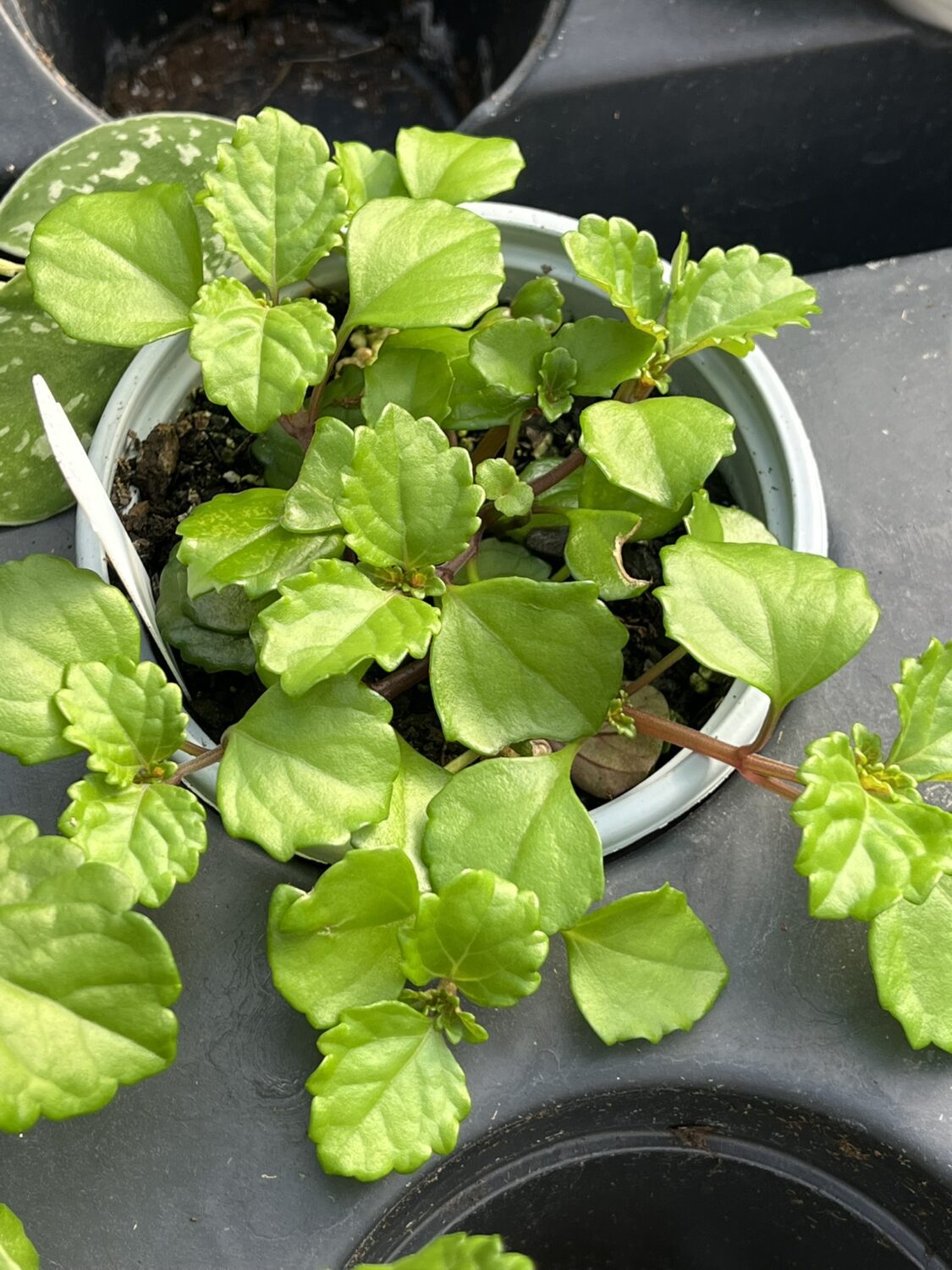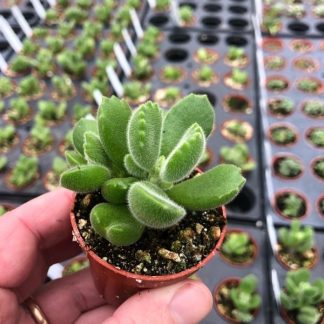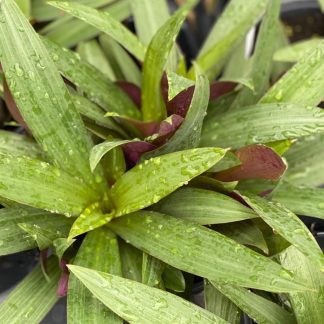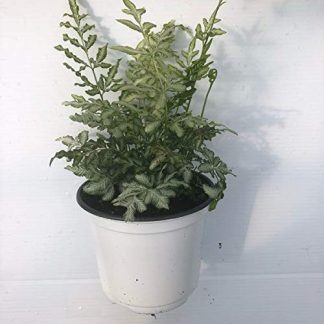Description
The Complete Guide to Plectranthus verticillatus: Swedish Ivy Care Made Easy
Welcome to the wonderful world of Swedish Ivy!
Plectranthus verticillatus, often called Swedish Ivy, is one of those plants that feels like an old friend the moment you bring it home. Its bright green, scalloped leaves spill gracefully over pots and hanging baskets. The glossy foliage catches sunlight in the most charming way. It’s lush. It’s lively. And it’s surprisingly forgiving—making it the perfect choice for beginners and seasoned plant lovers alike.
But here’s the fun twist: Swedish Ivy isn’t Swedish. It’s not even from Europe. This cheerful trailing plant actually hails from the warm, breezy coasts of South Africa. So how did it earn such a Nordic name? We’ll get into that story later. First, let’s explore why this plant has been a beloved favorite for generations and how you can grow it effortlessly in your own space.
Why You’ll Love Swedish Ivy
Swedish Ivy is a trailing perennial, which means it grows year-round and sends out long, cascading stems. The leaves are rounded, shiny, and delicately scalloped, almost like little green waves. Every so often, it rewards you with tiny lavender or white blooms—an extra treat against the lush foliage.
But the real magic? It’s easy.
This is a true “set it and forget it” plant. Perfect for busy people. Perfect for first-time plant parents. Perfect for anyone who wants beauty without stress.
Getting to Know Swedish Ivy
-
Botanical Name: Plectranthus verticillatus
-
Common Name: Swedish Ivy
-
Origin: South Africa (not Sweden!)
-
Plant Type: Trailing perennial
-
Light Needs: Bright, indirect light
-
Pet Safe? Yes—generally considered non-toxic to pets
How to Grow and Care for Swedish Ivy
Ready to dive in? Here’s everything you need to know to plant, grow, and love your Swedish Ivy.
1. Planting & Propagation
One of the joys of Swedish Ivy is how easily it propagates. Propagation is simply making new plants from cuttings—and Swedish Ivy almost seems designed for it.
How to propagate Swedish Ivy:
-
Snip a healthy stem about 4–6 inches long.
-
Remove the lower leaves so at least one node (the small bump where a leaf grows) is exposed.
-
Place the cutting in water or directly in moist soil.
-
Water method: Submerge the node in a jar of water and place it in bright, indirect light. Roots will appear in about 1–2 weeks.
-
Soil method: Plant the cutting in a small pot with damp potting mix and keep it slightly moist until roots form.
-
-
Once rooted, pot it up and watch it grow!
This makes a fun weekend project with kids or a thoughtful way to share plants with friends.
2. Light Requirements
Swedish Ivy thrives in bright, indirect light. It can handle medium light too, but it will grow a bit slower.
-
Indoors: Place it near an east- or north-facing window for ideal conditions. If your only sunny spots are south- or west-facing, use a sheer curtain to soften the rays.
-
Outdoors: Keep it in filtered shade. Direct afternoon sun can scorch its leaves.
Pro tip: If your plant starts looking leggy or sparse, it’s asking for more light.
3. Soil Needs
Think light, airy, and well-draining. Swedish Ivy loves soil that drains easily but still holds a little moisture.
Best soil mix:
-
2 parts potting soil
-
1 part perlite or coarse sand (for drainage)
-
1 part coconut coir or peat moss (for moisture retention)
This mix keeps roots happy and prevents soggy conditions.
4. Watering the Right Way
Watering Swedish Ivy is simple, but timing matters.
Here’s how to do it right:
-
Check the soil with your finger. If the top inch feels dry, water thoroughly.
-
Water more often in spring and summer (growing season).
-
Reduce watering in fall and winter when growth slows.
-
Always use pots with drainage holes.
Yellow leaves? You may be overwatering.
Crispy or droopy leaves? It probably needs a drink.
5. Temperature & Humidity
Swedish Ivy loves warmth and moderate humidity—similar to its South African roots.
-
Ideal temperature: 60–75°F (16–24°C)
-
Never below: 50°F (10°C)
-
Humidity: Moderate to high is ideal, but it adapts well to average indoor levels.
If your home is dry, mist the leaves occasionally or place the pot on a pebble tray filled with water.
6. Fertilizing for Lush Growth
Swedish Ivy doesn’t need heavy feeding, but a little boost keeps it vibrant.
-
Use a balanced, water-soluble fertilizer (like 10-10-10) at half strength.
-
Feed every 4–6 weeks during spring and summer.
-
Pause fertilizing in fall and winter.
Extra tip: Flush the soil with water every few months to prevent salt buildup from fertilizer.
7. Pruning and Maintenance
Want a plant that stays full and bushy? Pinch those tips!
How to prune:
-
Regularly pinch back the ends of long stems to encourage branching.
-
Remove yellow or dead leaves as needed.
-
Always use clean scissors or pruning shears.
Bonus: The pieces you prune make perfect cuttings for propagation.
8. Pests and Problems
Swedish Ivy is generally pest-free but can occasionally attract a few unwelcome visitors.
Common pests:
-
Spider mites
-
Aphids
-
Mealybugs
What to watch for: Sticky leaves, tiny webs, or curled foliage.
Solutions:
-
Wipe leaves with a damp cloth.
-
Spray with mild soapy water.
-
Use neem oil or insecticidal soap for persistent pests.
Fungal issues? Avoid overwatering and make sure the plant has good airflow.
9. Repotting Swedish Ivy
This plant grows quickly and may outgrow its pot every 1–2 years.
Steps for repotting:
-
Choose a pot 1–2 inches larger than the current one.
-
Gently remove the plant and shake off old soil.
-
Trim any brown or mushy roots.
-
Replant in fresh soil and water lightly to settle.
Repotting is also the perfect time to refresh soil and check for salt buildup.
10. Extra Tips for Success
A few small habits can keep your Swedish Ivy looking its best:
-
Rotate the pot weekly for even growth.
-
Dust the leaves every few weeks so they can breathe and photosynthesize.
-
If kept outdoors in summer, bring it inside before cold weather arrives—it’s not frost-tolerant.
The Mystery of Its Name
So, why is it called Swedish Ivy if it’s not Swedish? The most accepted theory is simple: during the 19th and 20th centuries, this plant became incredibly popular in Sweden. Its tidy growth and trailing habit were perfect for hanging baskets in bright Scandinavian homes. Over time, it earned the affectionate nickname “Swedish Ivy,” and the name stuck.
Quick Care Checklist
-
✅ Bright, indirect light
-
✅ Water when the top inch of soil is dry
-
✅ Light, well-draining soil mix
-
✅ Moderate warmth and humidity
-
✅ Pinch stems to encourage fullness
-
✅ Easy propagation from cuttings
-
✅ Repot every 1–2 years
-
✅ Dust leaves and rotate regularly
-
✅ Watch for pests (but don’t stress—they’re rare!)
A Plant That Grows With You
Swedish Ivy has a way of fitting seamlessly into your life. It grows fast. It forgives mistakes. And it shares generously—you can snip off a stem, root it in water, and gift it to a friend in just a few weeks.
It’s more than a houseplant. It’s a little green companion that adds movement and light to your home. Whether you hang it in a sunny window or let it spill across a bookshelf, Swedish Ivy brings ease and joy to any space.
Go ahead—invite this cheerful plant into your life. Watch it trail, grow, and thrive right alongside you.
A Living Cascade of Green
There’s something special about plants that give more than they take. Swedish Ivy is one of them. With a little love, a touch of light, and a bit of weekly care, it rewards you with lush growth and endless opportunities to share. And maybe that’s why it has been beloved for generations—not because of where it’s from, but because of what it brings to every home it enters.




